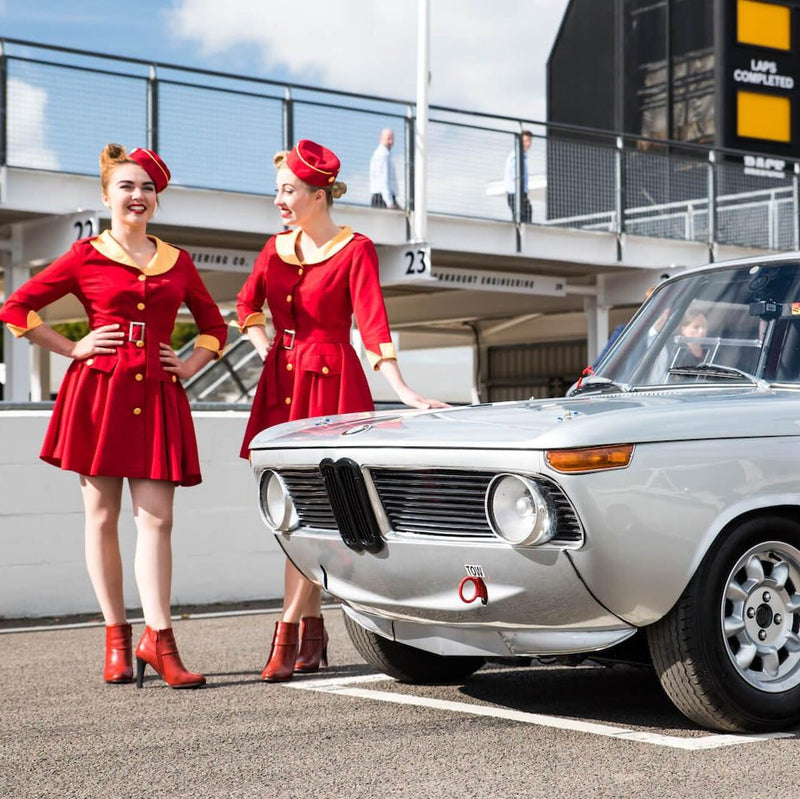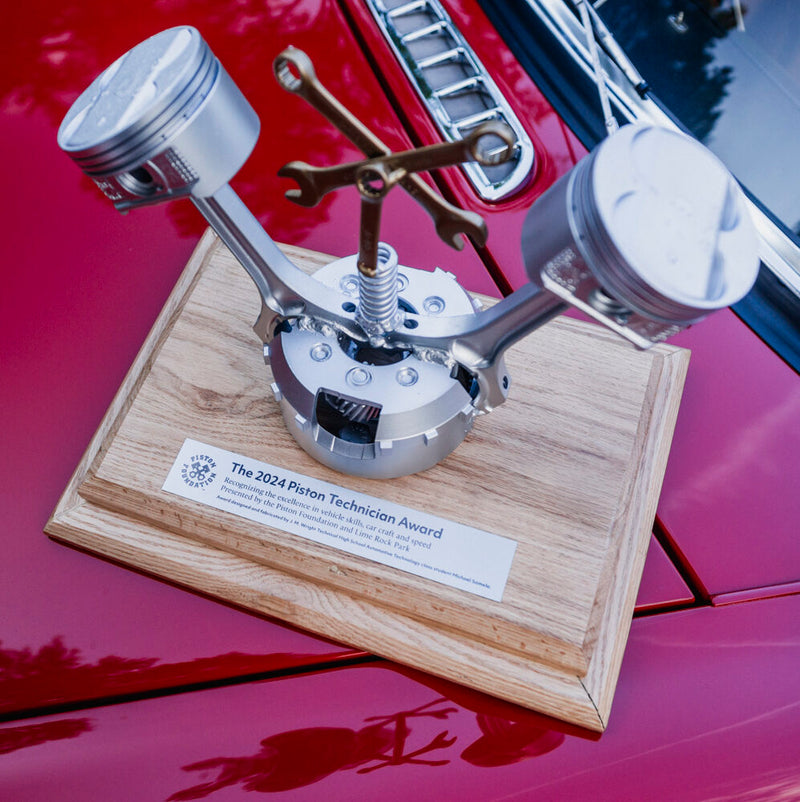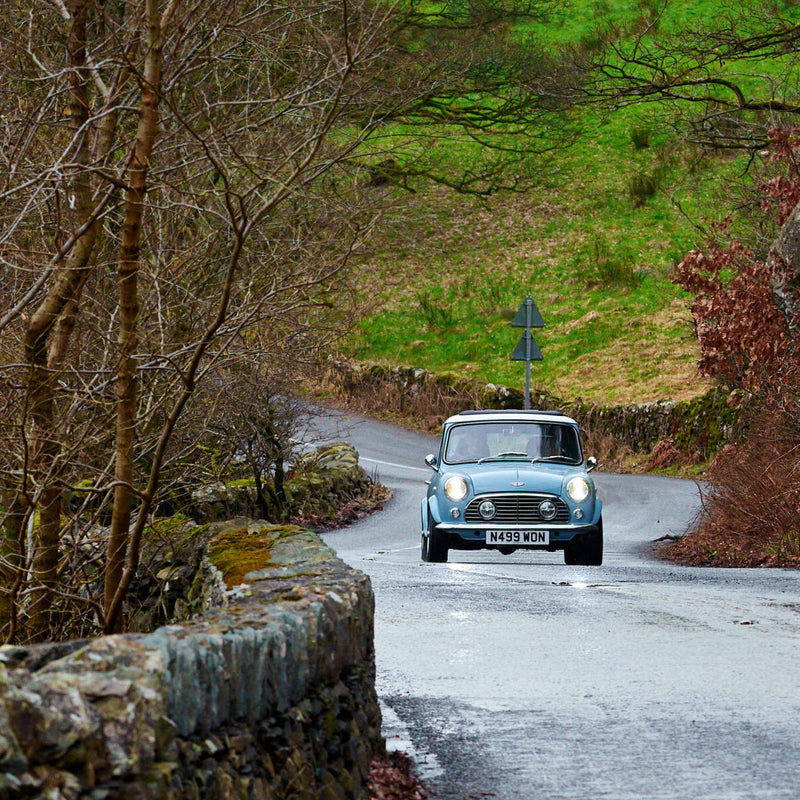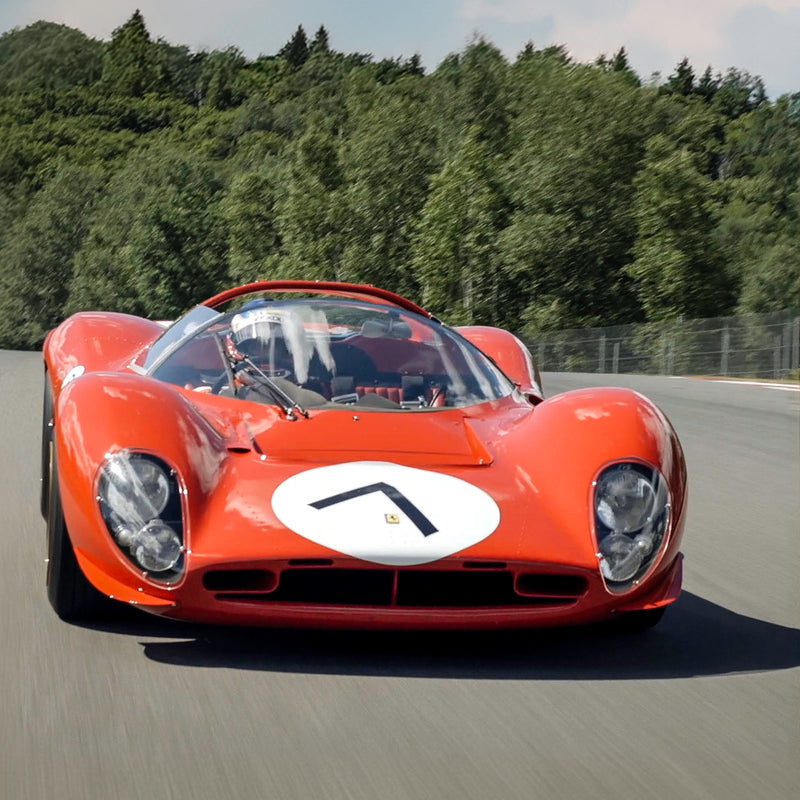Despite being a veteran of 119 WRC rallies and driving for numerous top teams, Armin Schwarz always had a special affinity for Lancias. Now, he owns some of the best examples of their rallying history, and I had the rare opportunity to see his collection close up.
The first thing I see in the workshop is the giant Trophy Truck that Armin used to tackle the Baja 1000, but he is best known as a rally driver. With a career that spanned 18 years, he's driven some amazing cars in some amazing places, but it's the one he's hardly driven at all that I have come to see. It's generally Porsches that look good in Martini liveries, but there is something special about an 037 and an S4 wearing the red and blue stripes under a layer of grit. For men of a certain age, these are dream cars—for Armin as well.




“When I was ten years old I went to a German rally with my dad, and for about fifteen minutes I could hear a car coming. The noise got louder and louder but I couldn't see it… then finally it came. It was a Stratos. At that time there were only Ford BDAs and Opels, so the Stratos looked like something from off this planet. It was like a nail in my head and from that moment it was my dream car.”
He would have to wait a little while to own one though. In the late '70s Armin started working as a mechanic in a Fiat dealership, helping out on weekends at local rallies to service his boss’s 131. For one rally in 1983 his boss couldn't make the start and let Armin drive instead. The then-teenager did much better than anyone expected, so much so that his boss decided that Armin would be the driver from that point on.
“It was hard to do anything in a nearly standard car, but I didn't have the money for anything else and I enjoyed it for a couple of years. But then in 1985 we managed to get sponsorship from the Schaeffler Group, a big company that went on to buy Continental tires. They weren't interested in us running an Italian car though—they would only sponsor a German one—so I bought an Audi 80 Quattro shell and spent the winter building it up.



“In 1986 we did the Mitropa Rally Cup with events all over central Europe from Italy to the Czech Republic, and we won it straight away. That got me a factory drive with Audi in the big 200, and in 1987 and '88 we won the German Rally Championship. As a gift for winning the '88 title, they gave me a drive in that year's RAC Rally. There were a lot of Audis there and the drivers were complaining that the 200 wasn't competitive against the Toyotas and Lancias, but I got 5th overall in my first world championship event, which proved them wrong.”
In 1989 Audi funded six rallies in the world championship, again in the 200, but from 1990 Armin’s true WRC career started with drives for the works Toyota, Mitsubishi, Ford, Hyundai, and Skoda teams. That's another Wikipedia page though…
With his first paycheck as a works Audi driver, he bought his dream Stratos, an ex-Jolly Club car that won the 1978 Targa Florio driven by Antonio Carello. Armin has now owned it for thirty years.
He also has a 037 in Martini colors, and if the 1986 Rallye Monte Carlo had been a dry event, they would have run the 037 for one of their drivers instead of the S4—the rear-wheel drive 037 was the spare then. He got it cheap because despite every part being brand new, it was all in parts in boxes without instructions. With his mechanical skills he put it together like a giant LEGO set and effectively built himself a brand new 037. In 25 years he has only done 1,500km in it, so it’s still quite fresh. Some might argue the point that it was never rallied, but technically this is the most original ex-works 037 in the world.


But it's the S4 that is his pride and joy, and the focus of this piece. In the ‘90s, Armin was invited to the home of Lancia driver Bruno Saby, and in his house in Grenoble, France he found the S4 in the garage. Apparently he, Saby, had done some testing for Lancia and they'd paid him with this car.
“I said, 'Whenever you want to sell it, call me first.' A couple of years later he called to see if I was still interested. I remember running out of the house to put the trailer on the car to drive over to France!”
The car only did two rallies in period, first driven by Mikael Ericsson in the Swedish Rally before it was taken to Argentina for local driver Jorge Recalde, who finished 4th overall in it. And that was it. Saby did some ice racing events with it but never changed any parts, not even the stickers.
And Armin really hasn't touched it either, which is why it's the only completely unrestored and untouched S4 in existence. It's not in absolutely concours condition though as its starting to show its age with some of the stickers starting to peel at the corners, but it's so amazingly original that every now and again Armin finds some small stones in the footwells—that’s Argentinian gravel from 1986!




“A couple of years ago, I took it to the Rally Legends event in San Remo and an old Lancia mechanic came over to look at the car and saw that there was a small oil leak. Nothing serious. He asked me what I wanted to do about it because he could have fixed it if I wanted him to, but we agreed that it should be left as it is. It's the only one the world in such original condition, so we should leave it exactly like it is, even if it doesn't run any more.”
In more than twenty years of ownership, he's only ever taken it out on very rare occasions but it does need to be run every now and again so all the rubber bushes don't get brittle and perish. The last event he took it to was the Rally Legends Festival in San Remo for the 30 year anniversary of the end of Group B. It was a great show for the spectators to see, but he never pushes it. Driveshafts are impossibly hard to find, and if something in the gearbox were to break that it would be it for the car. There are no more available from Lancia.







As a driver with over a hundred rally racing experiences and a WRC win—Catalunya in 1991—Armin is in the pretty special position of being able to compare modern WRC machinery with the Group B monsters: “The power is significantly more in the S4 of course,” he smiles, “at only 890kg with 480bhp and a 0-60 time of only 2.7 seconds on gravel, it is pretty special. But for handling and drivability, as strange as it sounds, the Skoda is so much better. By the early 1990s the Group A cars were already faster over the same stages as the Group B ones because of this.
“But there is no better thrill than driving the S4. It handles to my driving style which I really enjoy, and I like how the power, when it changes from the supercharger to the turbo, gives a smooth transition. Not like the Audi S2 and the Ford RS200s I have driven where you have to be pointing straight before you can put your foot down, the acceleration coming as if from some big explosion. It's very powerful the S4, but also very smooth and the power starts at 1,000 rpm and goes up to 9,800 if you want to keep going… But I never push it that hard.


“Personally I think that the S4 was the best Group B car. Peugeot had a better driver line up though, but if Henri Toivonen hadn't have been killed I think that Lancia would have been double champions for sure. Markku Alén was actually champion for a couple weeks at the end of 1986 until the FIA dropped the San Remo results and gave Juha Kankkunen the crown instead.”
Of course, people have offered all kinds of money for the car over the years, but Armin has declined every single one. Even the blank cheque. “I was at dinner somewhere and someone pushed it over the table and told me to write whatever I wanted on it. I didn't because if I sold the car it would be like selling a piece of my soul.”
Starting the car is also a rather special experience. First he has to go to the airport for some special aviation fuel… but even that is not enough. He has to add some special combustive ingredient too, which isn't really legal these days. But it's what the car was designed for so he can't just put normal fuel in from the station. Then, with the fuel pump disabled, the engine needs to be cranked until the oil pressure is up to 3 bar. With the first set of spark plugs, ones specifically for cold running the engine, the car can be started now. And when it is at operating temperature the hot-running plugs need to be put in.


“It's so much more than just turning a key,” he says. “I also like how inside has just the absolute bare minimum display. There's just the rev counter and fuel gauge and some lights for things. Green lights if something is too cold and red if it is too hot. They wanted to save weight but probably the main reason is that there's no way you can drive a Group B car properly and look at the gauges at the same time.”
Safety was the main reason Group B was banned, and it seems a little crazy to watch Youtube videos of these cars in action knowing that the drivers were sitting right on top of the fuel tank. Armin, no stranger to high speed driving and high speed accidents himself, has an opinion on all that as well: “I saw a video of Juan Manuel Fangio driving around the Nurburgring in the '50s and I thought that he must have been absolutely insane. The Nurburgring scares me today, but he was doing 150mph in a car that doesn't even have a seat belt at a time when there were just trees and people at the sides of the track. I feel perfectly safe in my 2005 Skoda Fabia, but maybe in twenty years from now rally drivers will look back and think that the WRC cars of today are crazy dangerous.
“I am sure that in 1986 drivers thought they had the best safety technology of the day. But rallying is always dangerous though… and the mentality for driving fast, I mean really fast, is such that you never think about having an accident. If you are worried about crashing all the time you won't get good stage times. You only think about going flat out through every corner and winning. Nothing else.

“People like to see danger though. If it wasn't dangerous and anyone could do it it wouldn't be such a spectacular sport to watch. The fact that it was so hard to control these cars meant that there were less than ten people in the world who could drive them properly at the limit, and that's why they became heroes, and why Group B is like a legendary era in rallying history. Sideways, so loud, spitting fire, going faster than you could have believed, no one who saw these cars racing could ever forget it… It's like a nail in the head.”




















































